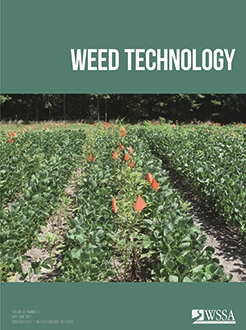Rapid vegetative growth and adverse application conditions are common factors leading to the failure of postemergence herbicides on Palmer amaranth. A sequential herbicide application, or respray, is often necessary to control weeds that have survived the initial herbicide application to protect crop yield and minimize weed seed production. The optimum timing after the initial application and the most effective herbicide for control of Palmer amaranth has not been characterized. The objectives of these experiments were to determine the optimum herbicide for treating Palmer amaranth regrowth, the optimum timing for each of those herbicides, and how the initial failed herbicide might affect efficacy of a second herbicide application. Bare ground field experiments were performed in 2017 and 2018 in which glufosinate or fomesafen herbicide failure was induced on Palmer amaranth plants that were 30 cm in height. Respray treatments of glufosinate, fomesafen, lactofen, 2,4-D, and dicamba were applied once at timings of 4 to 5 d, 7 d, or 11 d after the initial spray application. Nearly all herbicide treatment and timing combinations increased control by at least 13 percentage points compared to no respray herbicide treatment. Regardless of initial herbicide, glufosinate applied as a respray treatment was the most consistent and efficacious with up to 97% control. The specific herbicide used in the second application impacted final weed control more so than timing of the respray application. For instance, control by glufosinate respray treatments was 10 to 18 percentage points greater than control from lactofen respray treatments, whereas control decreased by 3 percentage points when respray applications of any herbicide were made 11 d after initial application of glufosinate compared to 4 to 5 and 7 d after initial application of glufosinate. In the event of failure to control Palmer amaranth with glufosinate or fomesafen, glufosinate should be applied in order to maximize control.
Nomenclature: glufosinate; fomesafen; lactofen; 2; 4-D; dicamba; Palmer amaranth; Amaranthus palmeri S. Watson






